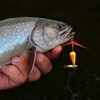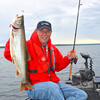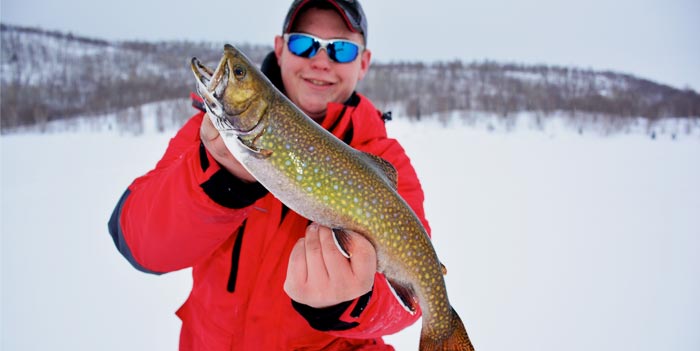
Catching Fish During First and Last Ice
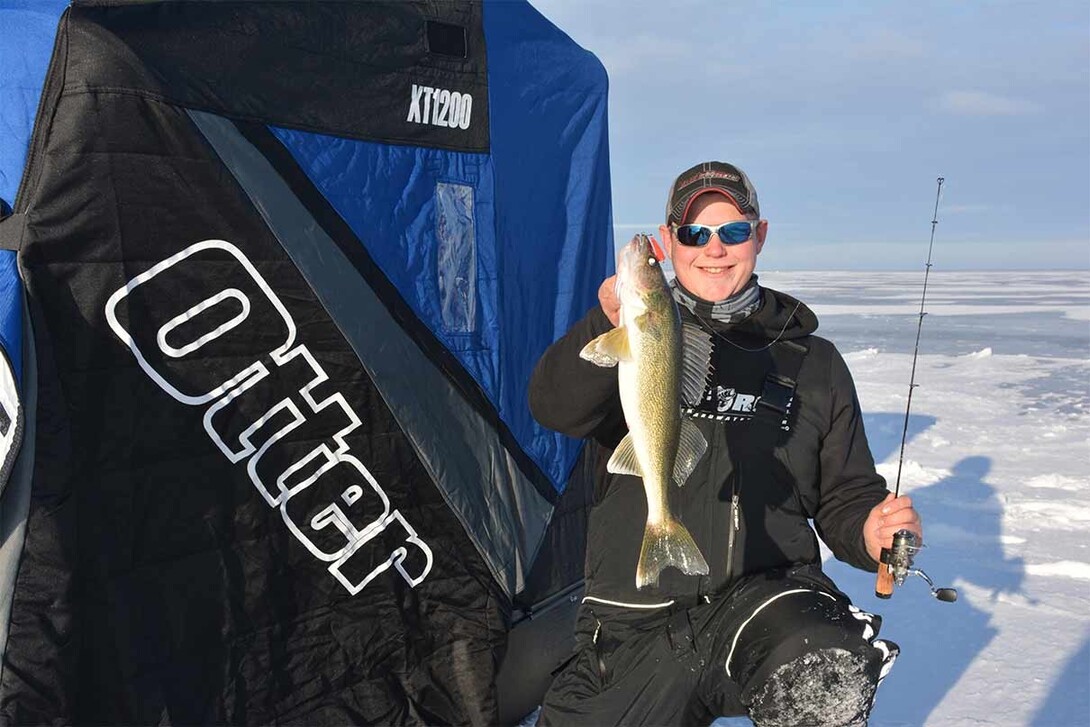
Outdoor enthusiasts are always looking forward to the next big event. When fishing is in your blood, opening day is a big deal. All across Ontario's Algoma Country, there is a host of opening days anglers can look forward to enjoying.
First, ice isn't officially an opening day, but it is the first opportunity ice fishing enthusiasts get to practice their craft. It doesn't hurt that first ice also produces some of the best ice fishing of the season! The next best option for ice fishing takes place months later on the last ice.
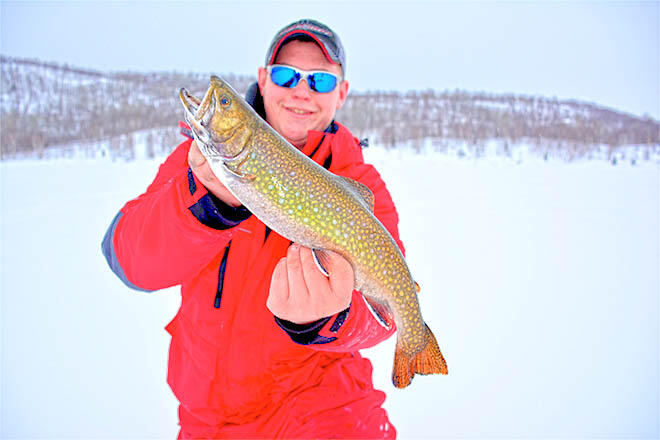
Why First And Last Ice?
I'm often asked why fish like perch, walleye, northern pike, lake trout and brook trout bite so well early in the winter and late in the winter, but during the middle of winter, the bite seems to taper off. The short answer to this phenomenon can be summed up in just one word -- oxygen. Early in the winter lakes all across Algoma Country have lots of dissolved oxygen. The abundance of oxygen comes from photosynthesis which is the process by which aquatic plants consume carbon dioxide and generate oxygen.
The photosynthesis process requires energy from the sun, so this process only occurs during daylight. At night, plants actually absorb some of the oxygen they produce. Thankfully for the fish that need this dissolved oxygen, plants produce about 10 times more oxygen than they consume.
Unfortunately, as the daylight periods in late fall and winter become shorter, plants start to slowly die and the amount of oxygen produced by aquatic plants and the process of photosynthesis also dwindles. The decomposition of organic matter also consumes oxygen from the water compounding the problem. By late winter collectively the dissolved oxygen in the water is less so fish naturally become less active.
Fortunately, this annual process starts to reverse as the hours of daylight slowly begin increasing, plant life rebounds and oxygen levels start to spike again. This is precisely why the best ice fishing of the season occurs on first and last ice.
All the dissolved oxygen in a body of water isn't produced by plants. Flowing water, springs and wave action also oxygenate the water. The best fishing lakes however are classified as mesotrophic bodies of water that have lots of aquatic weeds, plenty of plankton and a rich forage base of aquatic insects, minnows and crustaceans.
Strike When The Iron Is Hot
Because ice fishing is more productive early and late in the winter, savvy anglers dedicate as much time as possible during these peak periods. Travelling on the ice is also easier early and late in the season.
Early in the winter the amount of snow and slush on the ice is typically less than during the middle of the winter. Avid ice fishermen feel that the less snow on the ice the better from a mobility standpoint. When the ice is coated with only a thin layer of snow the ice forms quickly, also the ice is stronger, travel on the ice is safer and moving around on the ice is also far easier.
Before the big snows of winter arrive, anglers can walk to good fishing grounds or use wheeled vehicles like quads and side x sides. Once the snow load starts to build, wheeled vehicles are all but useless on the ice. Snow machines and track vehicles like the Argo which interestingly enough are produced in the heart of Ontario's snow belt start to dominate the ice fishing scene.
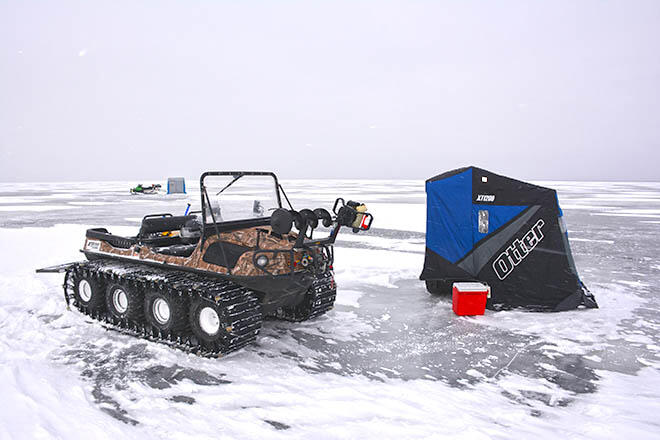
Many anglers mistakenly think that travel on the ice is impossible in late winter. Actually, the longer days and milder temperatures of late winter tend to compact the snow load. Often on late ice, most of the snow has compacted down or melted together, making it fairly easy to get around on the ice once again.
Subtle Presentations Dominate
Any way an ice fisherman slices the pie winter fishing is about catching fish that are more lethargic than they would be during the open water periods of the year. Not surprisingly fish living under a blanket of ice tend to feed less often and with less enthusiasm.
To consistently catch fish that are half-hearted in their feeding attitude requires fishing with more subtle presentations that tease and tempt fish into biting. This is precisely why static fishing techniques like using tip-ups produce so well during the winter months.
To get the most from tip-ups, rig them with ultra-clear fluorocarbon lines, select thin lines whenever possible and keep hardware like hooks and sinkers as small as practical. It also helps to set tip-up triggers as light as possible so when a fish bites it feels zero resistance.
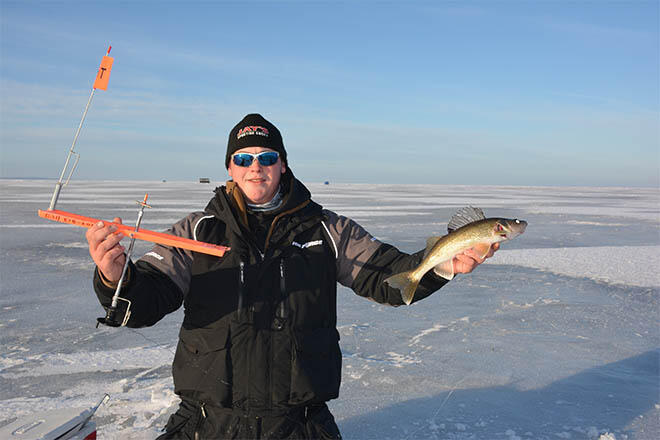
Jigging is also a productive ice fishing technique, but the movement or action imparted to the lure needs to be toned down a little. In ice fishing lures that sink slower are often more productive than those that sink quickly.
For example, jigging spoons are very popular lures for catching walleye, pike, trout and a host of other species during the winter. Some of the most productive of these spoons are wider-shaped and thinner constructed models that sink slowly and flutter downward. Heavier slab-style spoons sink quickly and often don't produce as well in the winter as they do in the open water periods of the year. The slower a lure drops, the more time fish have to react to the presentation.
Creative anglers use a host of tricks to slow up the sink of their favourite jigging lures. Walleye and pike anglers who use lead head jigs typically tip the jig with a live minnow. To slow up the drop of a jig/minnow presentation, try dressing the jig first with a soft plastic body and then tipping it with a live minnow. By bulking up the jig with both plastic and live bait, the sinking rate of the jig is slowed down and nearby fish enjoy a longer reaction period.
This same concept can be applied to panfish like perch and crappie by using smaller "panfish-specific" plastics in combination with more traditional live baits like minnows, spikes, wax worms and maggots. For finicky fish like bluegills, try using two, three or even four spikes or maggots on the hook at one time. This slows the drop time of the jig or teardrop and helps to ensure that bait stays on the hook all the time.
Making The Adjustments
Anglers who plan to ice fish in Ontario's Algoma Country should keep three key ideas in mind this winter. Number one is to concentrate on fishing activity early and late in the winter when fish are going to be the most cooperative.
Secondly, stay mobile and cover as much water as practical. Camping out in one spot is tempting, but usually staying too long in one spot is the fast track to failure when it comes to ice fishing.
Third and certainly not least, stick with subtle fishing presentations that fish slowly and tease fish into biting. Obviously, there are going to be days when the fish are more aggressive than others but in general fishing slowly and using subtle presentations produces the maximum number of bites in the winter months.
Recommended Articles

Lake Superior
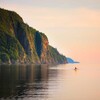
Old Woman Bay
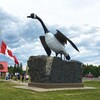
The Wawa Goose
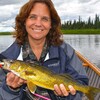
Eye Opener
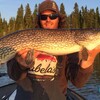
Early Season Pike

Facts About Lake Huron
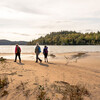
Gargantua Harbour and Warp Bay

Wreck of the Edmund Fitzgerald
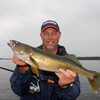
Drop Shot Walleye
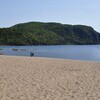
10 Secluded Beaches
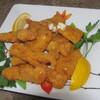
Fresh Fish Fries
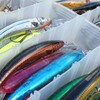
Pike and Muskie Leaders

The Ultimate Group of Seven Road Trip
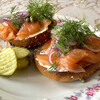
You Gotta Eat Here: 5 Must Try Restaurants in Sault Ste. Marie
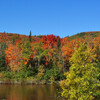
Riding Hwy 129
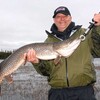
Pike & Dead Bait

The Butter Tart
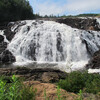
Tour Algoma's Waterfalls
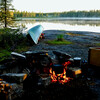
Experience Crown land camping
